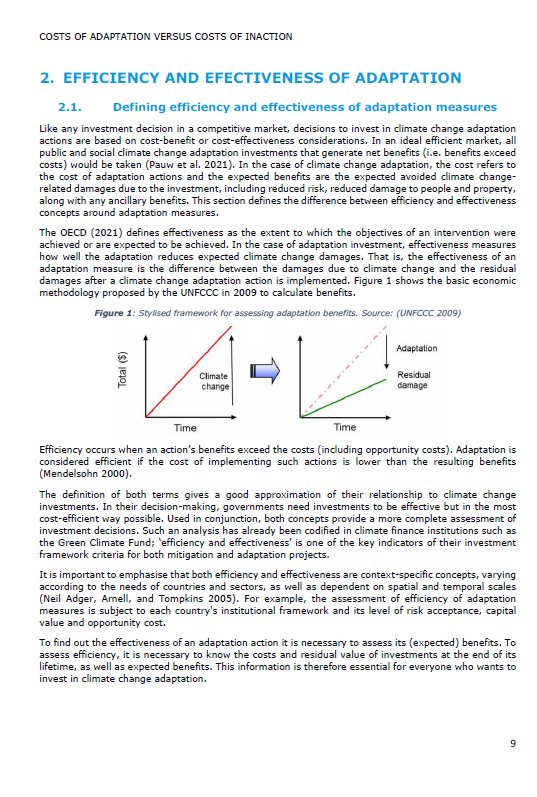Costs of Adaptation vs Costs of Inaction
- Publication
- Citation
Valverde, María José et al. 2022: Costs of Adaptation vs Costs of Inaction. Final Report. Ramboll Management Consulting, Ecologic Institute, Frankfurt School: Brussels, Berlin, Frankfurt am Main.
Both the costs of adaptation and the costs of inaction are central concepts that influence all political decisions. It is necessary to precisely define and calculate these costs to inform policy decisions. Insufficient knowledge and lack of information on these key concepts significantly hinder the development and implementation of effective climate adaptation strategies.
The European Environment Agency's report "Costs of Adaptation versus Costs of Inaction" highlights the urgent need for climate change adaptation strategies. In the face of increasing climate events such as heatwaves, forest fires and floods, the report notes that the European Union has already taken important initiatives on adaptation, including the formulation of the EU Adaptation Strategy. This strategy aims to make adaptation measures more efficient, faster and more comprehensive and to increase international readiness to act.
The challenges of accessing information and defining key concepts
The report further highlights that adaptation to climate change and the costs of inaction are key but vaguely defined concepts that permeate all policy decisions. A major problem is the lack of access to relevant information and understanding of key concepts such as adaptation finance, which makes it difficult to structure and evaluate adaptation strategies. These information gaps lead to problems in the evaluation and comparability of adaptation efforts at European level.
Methodology for assessing the costs of non-adaptation and adaptation
Finally, the report emphasizes the need to develop robust methods for calculating the costs of non-adaptation and adaptation costs. A detailed step-by-step approach is proposed that includes baseline definitions, socio-economic scenarios, climate projections, impact analyses and monetary assessments. This methodology is intended to help decision-makers make informed decisions on public investments based on a solid, comprehensive and comparable database.




